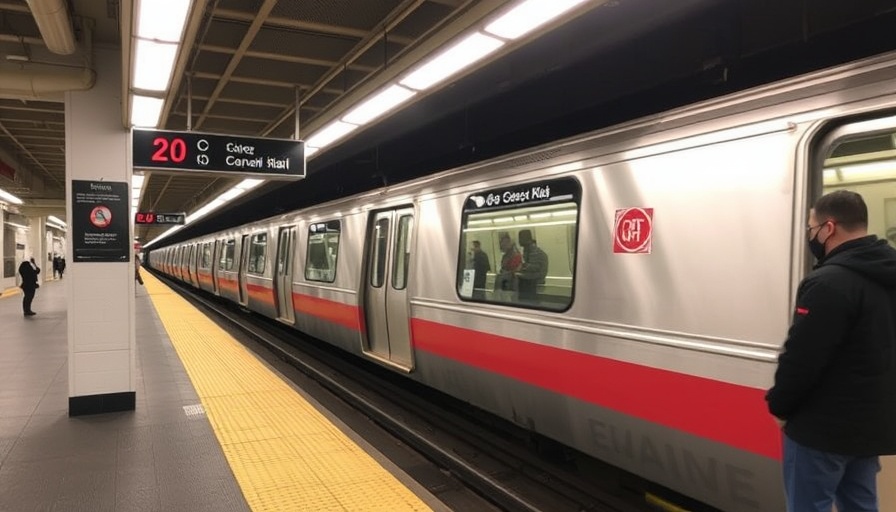
The Rehabilitation of Chicago's CTA Red Line Stations: A Milestone for Commuters
After four years of waiting, Chicago's public transport system is seeing a refreshing transformation with the reopening of renovated CTA Red Line stations. This renovation represents not merely an infrastructural upgrade but a vital investment in the city’s public transport ecosystem and its implications for urban development.
A Deep Dive Into the Renovation Process
The recent upgrades led by the Chicago Transit Authority (CTA) have culminated in stations that are equipped with modern conveniences, enhanced accessibility, and improved safety features that aim to cater to the evolving needs of city commuters. Originally conceived amid concerns over deteriorating infrastructure, these renovations were pivotal for a city that emphasizes the importance of efficient public transport for reducing vehicular congestion and lowering carbon emissions.
Connecting Infrastructure and Economy
Beyond aesthetic enhancements, the reopened stations symbolize a broader economy-oriented vision. As people return to working in office environments, public transport plays a crucial role in ensuring steady commuter flow. Insights gained from historical patterns indicate that investments in public transport typically correlate with elevated local economies, highlighting the necessity for strategic upgrades in infrastructure. As the economy rebounds post-COVID-19, these renovations could potentially stimulate job growth and bolster retail sectors surrounding these stations.
Societal Implications: Accessibility and Inclusivity
Among the most pressing concerns in urban infrastructure is ensuring that all community members have equitable access to transportation systems. The renovations specifically addressed accessibility challenges, aligning with broader national discussions about inclusivity in public services. Ramps, tactile indicators, and wider turnstiles are not just features; they signify a commitment to meeting the diverse needs of all passengers, including the disabled and elderly. This ethos resonates with national dialogues surrounding civil rights and equality.
A Broader Context: National Transportation Challenges
This local improvement mirrors a national struggle with infrastructure degradation across major American cities. The Biden administration’s emphasis on infrastructural reforms aligns with this renovation trend, focusing on long-term investments in transportation. Given the context of harsh realities regarding aging infrastructures nationwide, Chicago’s CTA Red Line stations can serve as a model amid calls for increased legislative support towards regenerative projects. Federal policies that encourage enhancements in public transportation could significantly impact existing structures, particularly in urban landscapes that thrive on population density.
Future Considerations: Sustaining Momentum
As Chicago celebrates the reopening of these transit hubs, attention must remain on sustainable practices regarding maintenance and future enhancements. Ongoing advocacy for bipartisan support of infrastructure bills at both state and federal levels will be crucial in maintaining this momentum. Lessons drawn from this renovation should propel not only Chicago but other cities also grappling with transportation-related challenges.
A Lasting Legacy: How Communities Shape Infrastructure
Public feedback during the renovation process underscored the importance of community involvement in infrastructural projects. This highlights a valuable lesson: engaging stakeholders ensures that renovations meet the needs of those who rely on these facilities. As cities look forward, fostering legislative frameworks that support public engagement in urban planning will be pivotal in creating infrastructures that are reflective of communal aspirations.
As the renovated CTA Red Line stations welcome back commuters, they stand not only as upgraded facilities but also as symbols of Chicago’s resilience and adaptability in facing modern urban challenges. It reminds us that infrastructure is not merely concrete and steel; it is the lifeblood of community interaction, economic activity, and environmental sustainability.
 Add Row
Add Row  Add
Add 




Write A Comment